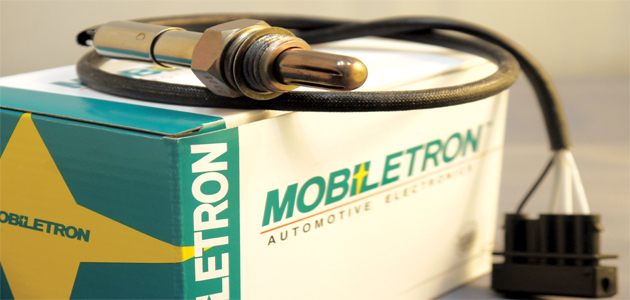
Lambda or Oxygen (O2) sensors measure the oxygen level in the exhaust system. The ECU is then able to use this information to adjust and balance the fuel mixture in order to achieve the ideal air-fuel ratio, which in return maximises fuel economy and minimise emission. Because of the sensitive nature of this particular component, there are some key diagnosis, handling and fitment guidelines that technicians should follow, so use the guide on the right to help you with this.

Installation tips and notes
> Avoid dropping oxygen sensors as this can damage the ceramic cell;
> Don’t use any tools to tighten the sensor that don’t incorporate torque control. Our advice is that it is best to tighten the sensor by hand;
> Ensure wires are not twisted or in contact with surfaces that could get hot;
> Don’t expose the sensor to water, oil, anti-freeze or any anti-corrosion compound that could potentially cause contamination;
> All Mobiletron oxygen sensors are burned-in during quality tests, therefore the sensor tips may be slightly discoloured – this is perfectly normal.
Symptoms of failure
> Drivability issues such as ‘surging’ and erratic idling as well as hesitation during acceleration;
> Poor fuel economy;
> High CO and HC emissions which can result in an MOT failure.
Typical causes of failure
> Sensor contamination by lead from leaded petrol or Silicon from antifreeze;
> Carbon build-up over a period of time can also affect the sensitivity of the sensor;
> Heater element failure, resulting in rich fuel mixture at idle.
Basic testing
Contamination can be spotted by a simple visual inspection:
> Shiny deposits imply that there is a high level of lead in fuel;
> Soot deposits blocking the sensor cover can cause reduced sensitivity;
> Thick white or grey deposits imply that the engine is burning oil or there is the use of fuel additives containing substances that can damage the sensor element;
> Heater filament damage can be easily tested by measuring the heater resistance using an ohmmeter and then by comparing this data against manufacturer specification data. Complete failure usually results in an open circuit;
> A functionality test can be performed by monitoring the output voltage using an oscilloscope or voltmeter. If you check against varying engine load, the response should be instantaneous and fluctuate between 0.2 – 0.8 volts for Zirconia sensors and between 2 – 5 volts for Titania sensors;
> Oxygen sensors can sometimes produce faulty readings due to an air leak in the intake or exhaust manifold or even a faulty spark plug. These areas should be checked.
Mobiletron’s two year warranty
Mobiletron UK is so confident about the quality of its range of O2/Lambda sensors that the company has increased its warranty to two years for all UK motor factor customers. This warranty will also be passed on to garages – all they need to do is simply send returns via the distributor that they initially purchased the product from.









